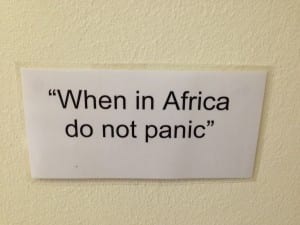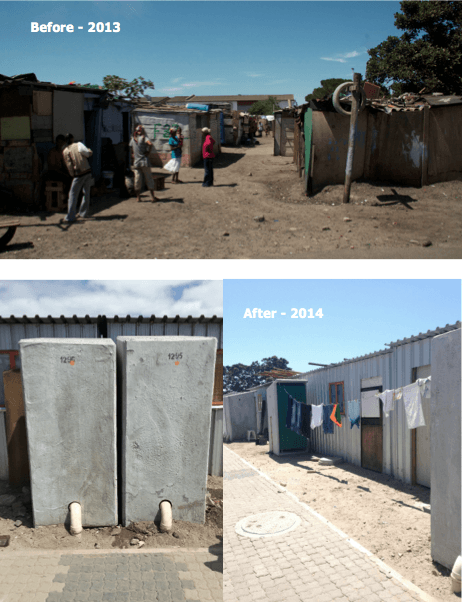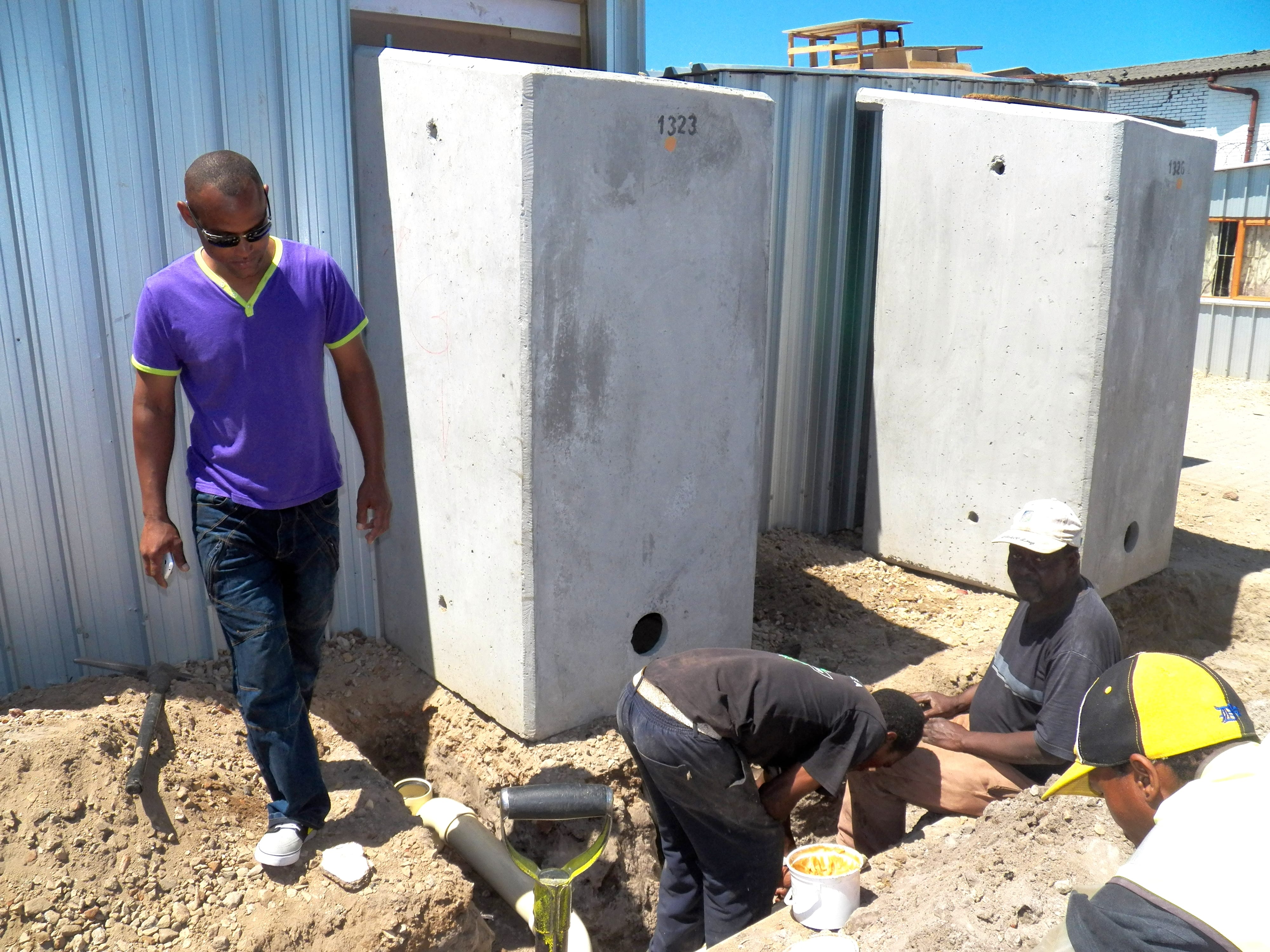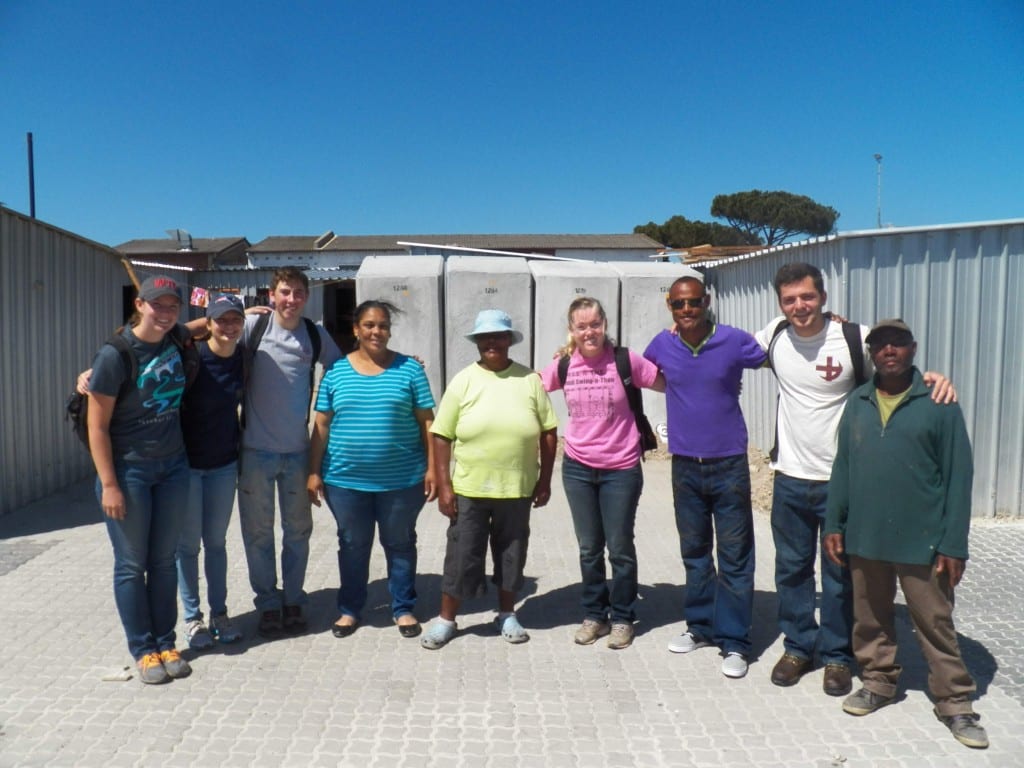Scene 1: When in Africa…
…Do Not Panic
Background
After last year’s reblocking efforts, the Flamingo Crescent community continued to upgrade their living space. Their reblocking progress is close to completion with 98% of the project done with bathrooms and plumbing being the main components left to be completed. This complicated process opened up two spaces devoted for Early Childhood Development, a crèche and a playground. Several stakeholders will be involved to bring resources and ideas together to come up with the best possible outcome for the community. One of the most important stakeholders is our primary sponsor, the Center of Early Childhood Development (CECD). Eric Atmore, one of CECD’s founders, is fully committed to the project and will be instrumental for the financing of the playground structures and the crèche. In addition, CECD has several teaching tools and resources that the team hopes to share with the local leaders in Flamingo Crescent. Establishing a healthy working relationship between this organization and Flamingo Crescent will help with the sustainability and continuous improvement of the educational facility.
Cast of Characters
CECD – Eric Atmore
The WPI Flamingo Team – Jacquelyne, Malina, Andres, Justin, Kristin
ISN -Melanie, Terrence
City of Cape Town – Levona Powell
Community Members – Lenrika, Elizabeth, Auntie Mary, Uncle Henry, Mark
Lenrika’s son – Elrico
Setting
Centre of Early Childhood Development
Flamingo Crescent Informal Settlement
Scene
Day 1:
We arrived at the CECD anxiously awaiting our first encounter with Eric Atmore, the director and founder of the Centre for Early Childhood Development. We were warmly welcomed by the staff of the CECD and escorted to a meeting space where Eric came to meet with us. Our first real taste of Cape Town was local coffee and pastries which was served to us before the meeting began. Before diving into the inner workings of the organization, we briefly introduced ourselves by explaining our backgrounds, majors, and goals for the project. Once we finished, Eric took over to give us an extensive history of the apartheid era and the lasting effects South Africa is still experiencing. He then provided us with an overview of early childhood development in South Africa and how the CECD plays an important role in all 9 provinces. Although they have a “footprint in all of the provinces,” the major cities are Cape Town, Johannesburg, and Durban. Eric went on to explain the different staff members at the CECD and their roles before we dove into the logistics of our project. Through this discussion, we collaborated to decide on three main objectives for our stay in Cape Town. These include:
- To plan and create a standing physical structure to serve as a crèche for the children of Flamingo Crescent
- To create a fully functioning outside play area for both the children enrolled in the crèche and those children who are not, as well as the parents and other community members.
- Organize and govern a management plan of the crèche and play area in order for the crèch
e to operate long after our departure.
We then briefly discussed costs and crèche plans for both a simple and a modular structure. It was a very promising start to our project since Eric was very passionate about his work and sparked our interest in the possibilities that effective Early Childhood Education has to offer.
We then head over to the site that we would be working with for the next 7 weeks, Flamingo Crescent. It was bustling with people talking and men working as we were greeted by Melanie, Terrence, Lenrika, and Levona. Terrence and Melanie are members of the Informal Settlement Network (ISN), Levona works with the City of Cape Town Municipality, and Lenrika is one of the community leaders of Flamingo Crescent. The community was a lot further along than what we had expected. The shacks were made of new metal sheets and men were digging in the ground to lay pipes to connect the toilets to the septic tanks.
The community layout had order to it with evenly spaced out shacks, individual bathrooms, and brick pathways. It was evident that Melanie and Terrence were very excited to see us arrive. Melanie exclaimed that they had been saving the area for the recreational area and crèche for us to work on in the upcoming months. She is definitely setting the bar high but it was something the group is willing to rise to. After getting a sense of how far along the settlement was we headed out to process everything.
Day 2:
We arrived in Flamingo Crescent around 9:30am to begin our second day. There was no one there to greet us this time so we began saying hello to some of the community members. After finding Terrence we went into a meeting room along with Lenrika, Elizabeth, Aunt Marie, and Uncle Henry. From there we showed them a map we had printed out of North America and explained to them where we were from. We showed them pictures of our family, talked about holidays and weather, and got to know them a little. After a while of laughing and conversing we went out into the community and Terrence took us door to door introducing us to some of the community. They told us about how the reblocking had affected them and we explained that we were going to be working on the recreational space and crèche. Although some community members acknowledged there were still improvements to be made, overall the community expressed that they have been very pleased and appreciative of the outcomes of reblocking. They really like the new concrete toilets as opposed to the chemical toilets that they used to have and most said that they now had more space than before. They also really liked that the material is made out of fire resistant metal, since fire breakouts had been an issue prior to reblocking. One of the members of the community showed a burn mark on the side of their shack that would have most likely burned down with the old material. We ended up conversing with almost 50 members of the community. It was a great way to begin to integrate ourselves into the community but we still have a lot of work to do until we can gain their trust. Additionally, we met some community members who were interested in helping build and paint the crèche and the recreational space.
At 12:30pm we headed over to the CECD to work. Surprisingly, Eric walked in with the potential sponsor of the crèche. We talked to him briefly about the progress in Flamingo Crescent and he seemed really excited. After, we talked to Eric about materials we might need for community activities. He was concerned that the recreational area had a brick overlay so he recommended we find local companies that could donate surfacing such as Astroturf and carpet samples.
Reflection
It’s safe to say now that our first days came to an end we can take a big sigh of relief. Things have gone as well as we had hoped. Our sponsor Eric is incredibly passionate about his work and has offered us a lot of support throughout the entire process. Our co-researcher Terrence from ISN is incredibly passionate about all of the progress the community has made
and the community is excited to see us bring more. The community looks better than the pictures we had previously seen and it was awesome to see how optimistic and overjoyed the members were. Many could speak English and had done a lot of the construction work throughout the entire process, making them prideful in their community. However, even with all the progress the level of poverty is still shocking. In the community most members are unemployed and the children are almost always unattended and left to roam the streets to play. They talked about how their government’s relief efforts for poverty are much weaker in comparison with other countries, causing frustration. As we drive to our site we see thousands of shacks along the road, many of which are in awful condition making it hard to fathom that people live there day in and day out. As a result of this drastic level of poverty, many citizens burn street lights to show their frustration for the government’s inability to build formal houses for them. Our sponsor told us that South Africa has one of the worst ratios between the poorest citizens and richest resulting in a large class divide that leaves those at the bottom with little government attention.






